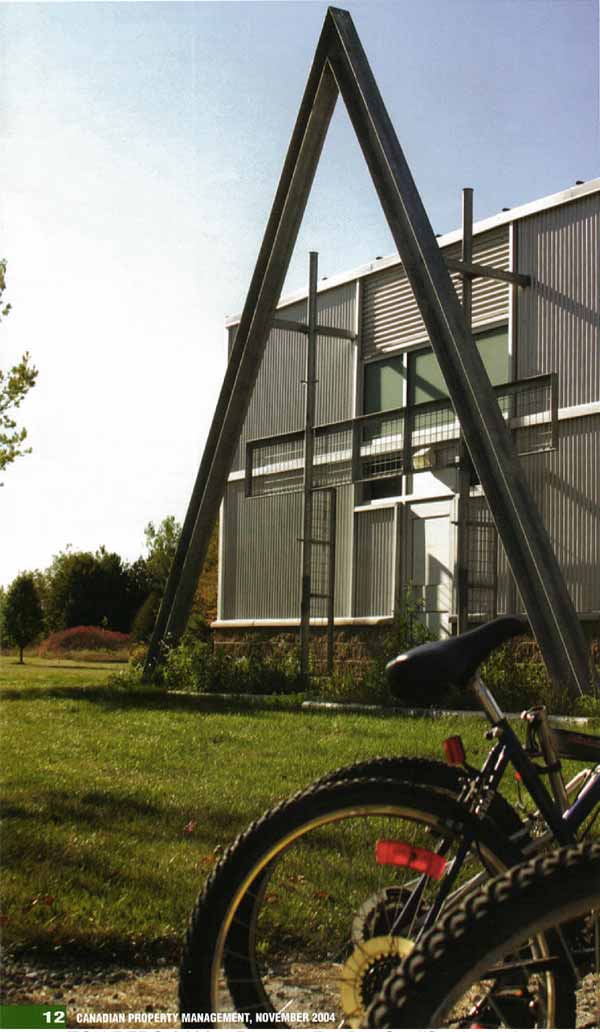By Barbara Carss
Technology and design make the new learning space at Sir Sandford Fleming College's Frost Campus at Lindsay, Ontario one of the most energy efficient structures in Canada. Ambience and aesthetics reinforce its standing as a centre for environmental and natural resources sciences.
The $10.2-million, 42,000-square-foot environmental technology wing is a major expansion of research and student support facilities apply in sync with growing demand for expertise in a wide range of environment-related fields -- and the building itself is a teaching tool. Many of its innovative features and systems are open, accessible and integrated into the educational curriculum. The public, too, is invited to stroll the two main corridors that have been devised as discovery trails to celebrate the ecosystems of Ontario.
"Our goal was to demonstrate to ourselves and to the public that we could deliver this on budget and in an environmentally sustainable fashion," says Jim Madder, the former principal of Fleming's Frost Campus, who oversaw planning, fundraising and development. The official opening occured in October, but the wing has been actively occupied since the winter of 2004.
It encompasses a library/resource centre, computer-assisted bio-diversity laboratories and Fleming's new Geomatics Institute, which is outfitted with the most up-to-date geographic information systems (GIS) technology. Another new research venture, the centre for Alternative Wastewater Treatment, has a greenhouse within the wing to support the outdoor simulated wetlands where effluent -- including the grey water emarating from the building's own washrooms -- will be treated and monitored under a number of different conditions.
A combination of building design and materials, HVAC elements, electicity demand management controls and the orientation toward the sun, shade and prevailing winds achieves a level of energy efficiency deemed 66% better than the standards set in Canada's Model National Energy Code for Buildings (MNECB). This is one the best results yet recorded in Natural Resources Canada's (NRCan) Commercial
-----
Photos Courtesy of Fleming College

